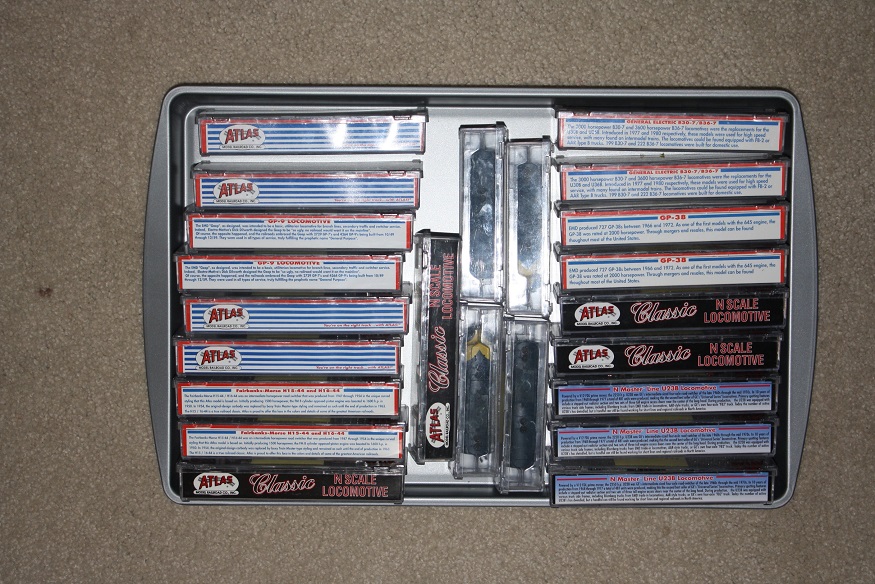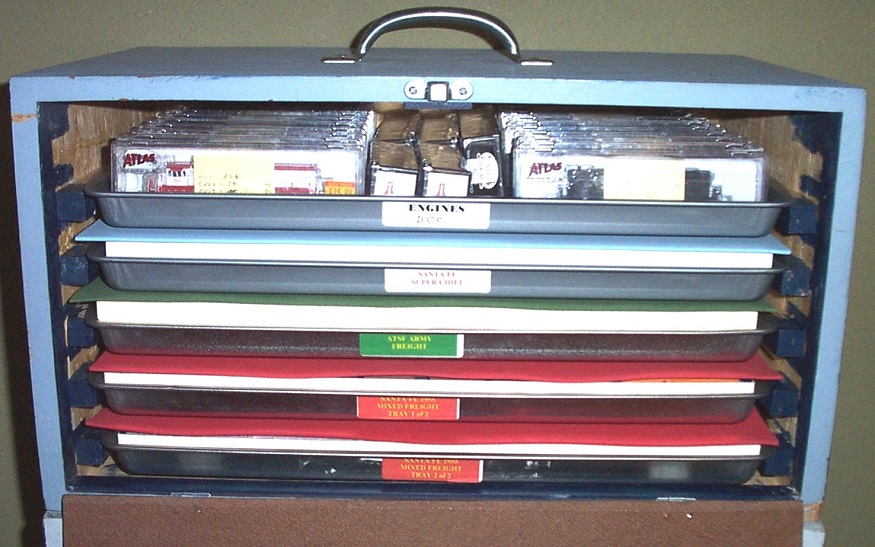For most trains with a mix of car types and sizes, a 13 horizontal row grid is the best (Figure 8). For unit trains,
however, some minor grid modifications can increase storage capacity. For example, a row in the standard 13
horizontal row grid has room for four 46’ Bethgon CoalPorters with one inch left over. By shortening the twelve
interior 1” strips by 0.833”, a vertical row can be added at one end allowing space for two more coal gons and a
caboose (Figures 9 & 10). Unit grain trains with 55’ 3-bay hoppers have room for only three cars per row, but the
leftover space allows for four vertical rows that will house two hoppers each (Figures 11 & 12). And, if you get
fancy, there’s room for two 40’ cars at the end of the vertical rows. Note that the Grain Train grid and the
passenger grid are essentially the same, with four vertical rows. If a tray is to hold excess height box cars,
auto racks, bi-level passenger cars, TOFCs and/or well cars with containers, make the grid for that tray with 1¼”
wide poster board strips rather than 1” wide strips so the whole car will be protected. The wider strips will not
cause a clearance problem when stored in the rack.
Vacant spaces should be filled with blocks of ¾” foam. These fillers are made by cutting 1” wide strips from a sheet
of ¾” extruded insulating foam and then cut these 1” x ¾” bars to the length of the empty space (Figures 13, 14 & 15.)
The foam is available at Home Depot. Foam fillers add stability to the grid and keep the cars from moving around on
the sheet. As you add cars to your train, just trim the filler to the size needed and use the cut piece somewhere else.
Finally, attach adhesive labels such as Avery #5160 (1” x 2 5/8”) to the front of each tray to identify its contents.
Microsoft Word is pre-programmed for these labels so that they can be easily printed and even color coded.
Part II – The Closet Storage Rack Closets with a double clothes rack usually have a lower shelf about 40” off
the floor and an upper shelf about 80” off the floor, leaving around 39” between the shelves for the rack. Before
building the rack, the existing shelves and their runners need to be reinforced since, when fully loaded, the weight of
20+ trays can be up to 100 lbs. Drive some long screws through the shelf support brackets and into the wall studs and
screw the shelves to the support brackets.
For the shelf racks, space the vertical boards 19¼” apart and secure to existing horizontal shelves with screws.
(Use standard 12” x ¾” shelving boards for the vertical supports.) To make the runners that hold the trays, rip a 1 x 4
into ¾” strips. You should get four strips per board. Chop the ¾” x ¾” strips into 11” long runners. Drill pilot holes
for the screws and sand. Glue and screw the runners using 1 ¼” screws and spacing them with a 7/8” gap between the top of
one and the bottom of the one above it. This gap will allow adequate room for high clearance cars and the top piece of
foam. (Hint: Make a spacer jig that is 7/8” tall. After you screw and glue the lowest runner, place the jig on top of
that runner and place the next runner on top of the jig, screwing it in place. Move the jig and continue up the wall.
Make a taller jig if you want more clearance between some of the shelves.) (Figure 18)
This storage rack can also be built in modular form by simply screwing a 20¾” piece of shelving across the top and bottom
of the vertical boards and attaching a piece of 3/16” hardboard to the back of the rack. The module can then be placed not
only in a closet, but under your layout or anywhere. The modular version of this system can be built to any height and can
be made portable by attaching wheels to its bottom and/or a handle to the top. Just remember that when loaded, it can
become VERY heavy.
I keep my engines in their jewel case boxes and store them on cookie sheets without foam or a poster board grid
(Figure 19.) The jewel cases are placed on their side so the engines are stored wheels down to maintain balanced
lubrication. Locomotive trays with engines stored in this manner require additional clearance. The space between
runners meant for a locomotive tray and the runners above it should be increased from 7/8” to 1½”. Engines that have
extra tall boxes can be stored on their side or you could install one set of runners with even more clearance.
Most all of my cars are assigned to specific train consists. When I want to run a particular train, I pull out the tray
(or trays) holding that train, grab the appropriate engines from the locomotive tray and I’m ready to place cars on the
track. Having the rolling stock stored in the trays rather than in their jewel case boxes makes train setup and tear-down
much faster and easier. A friend who uses my system stores cars by type in the trays. For example, he has trays for 40’
box cars, for 50’ box cars, for reefers, etc. Another friend has trays for each railroad, trays for ATSF cars, trays for
SP, trays for UP, etc.
The trays are really handy when travelling to train shows with my N-Trak club. As indicated above, a storage rack can be
made as a portable module. This can be taken one step further by installing a hardboard door to the front and a handle on
the top. I built a storage box similar to the closet rack, but with only five slots (Figure 20.) The 5-slot design yields
a travel case that is not too heavy when loaded and will easily fit in the trunk of a car. If you build one of these, give
the top shelf enough clearance so that a locomotive tray will easily fit. When it’s time to travel to a train show, all I
have to do is pick four trays with the trains I want to run at the show, load the engines on the top tray along with my DCC
throttle and spare batteries, slide the trays into the travel case and I’m ready to go.
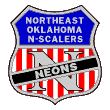


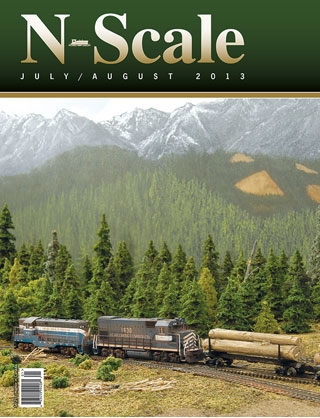
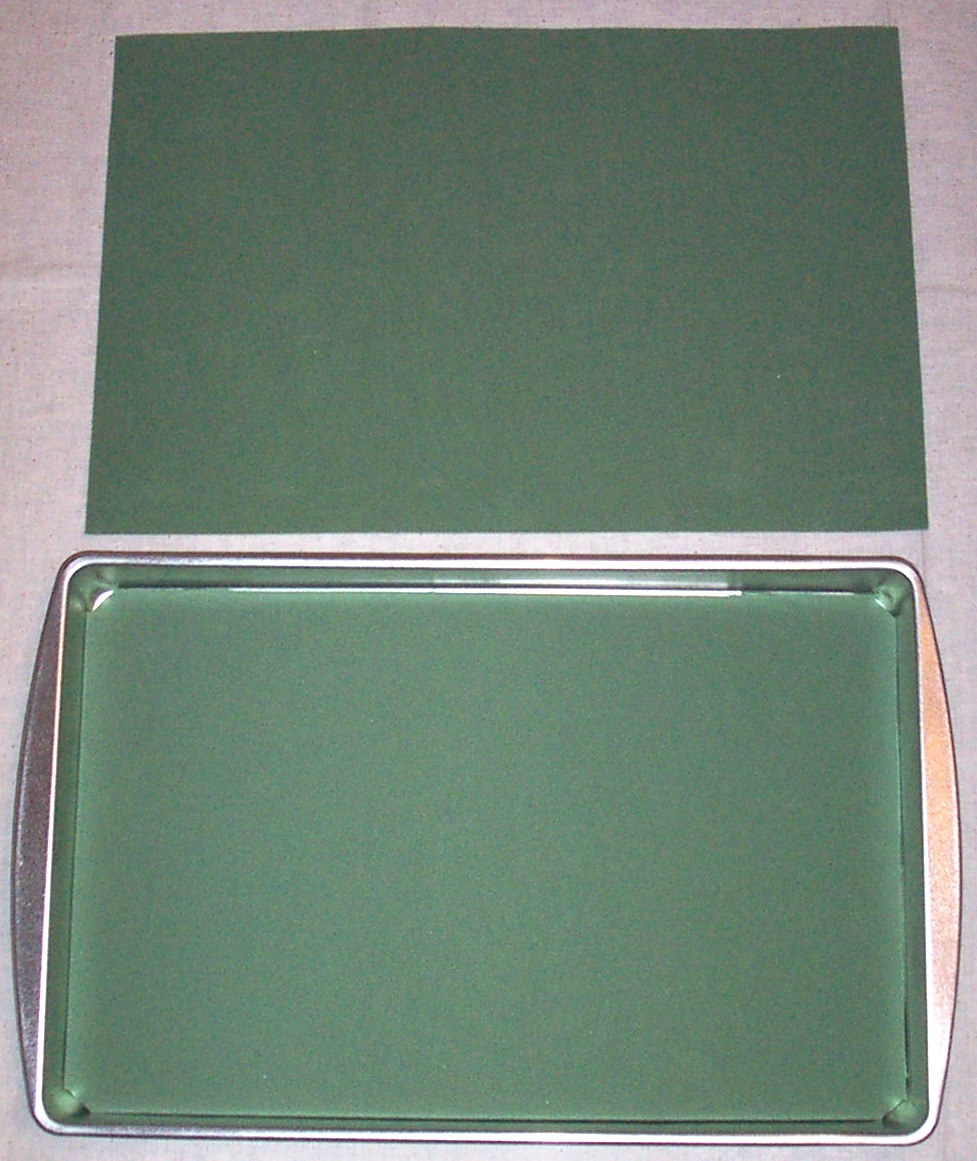
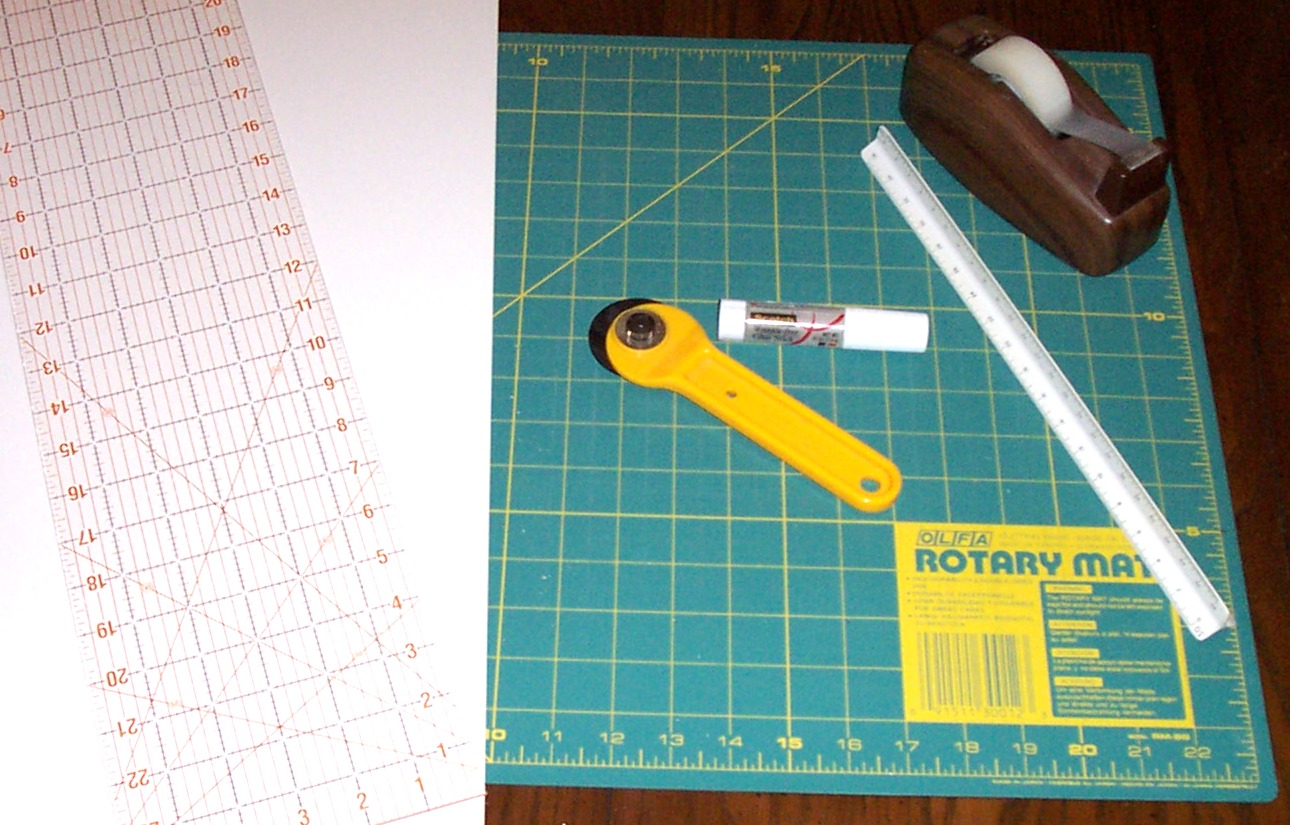
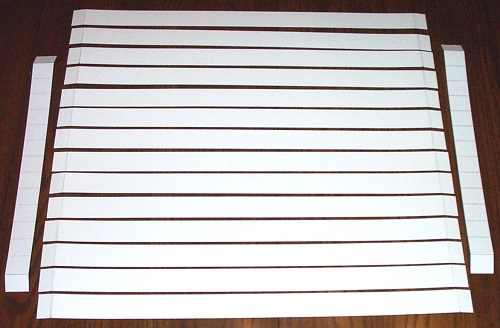
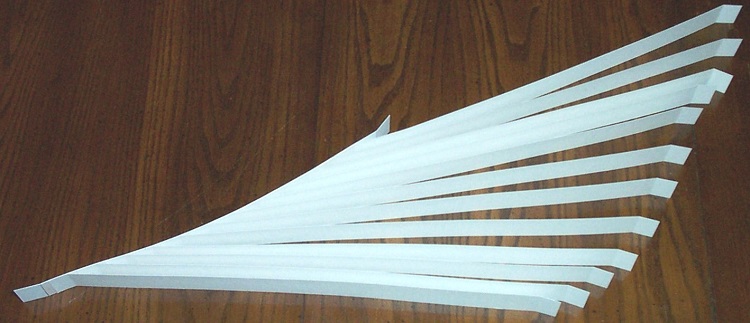
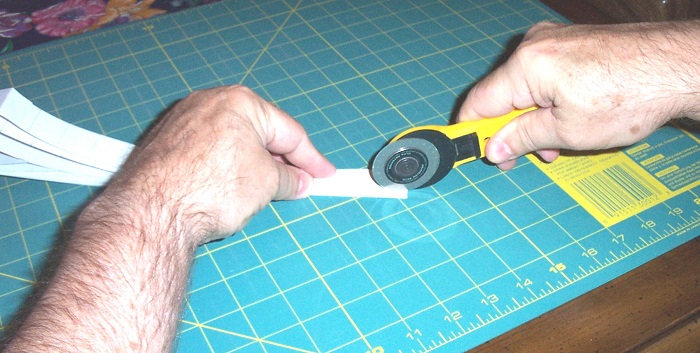
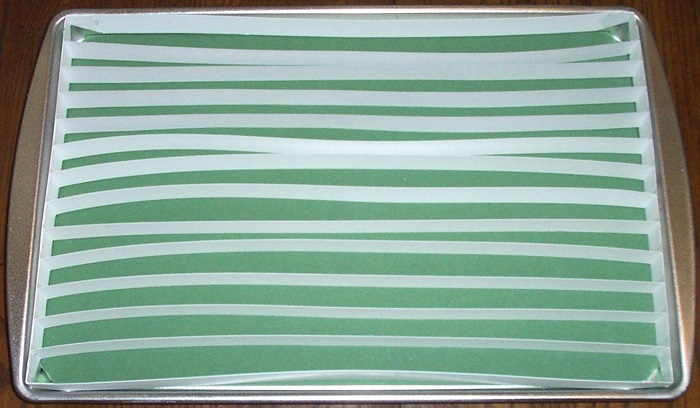
.jpg)
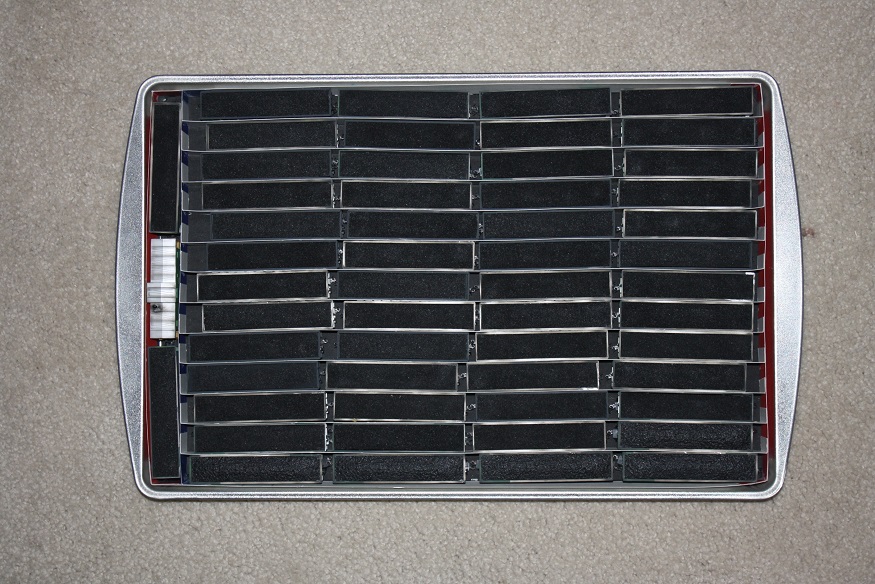
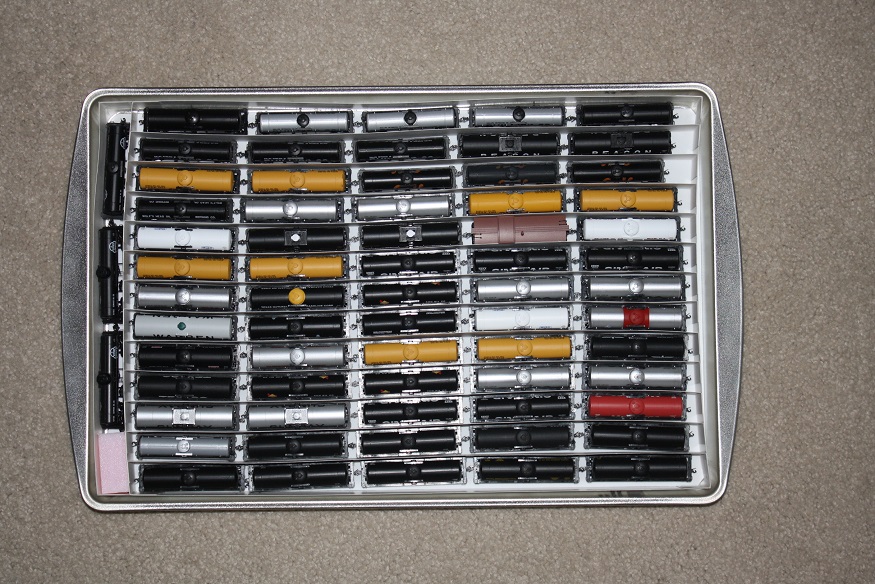
.jpg)
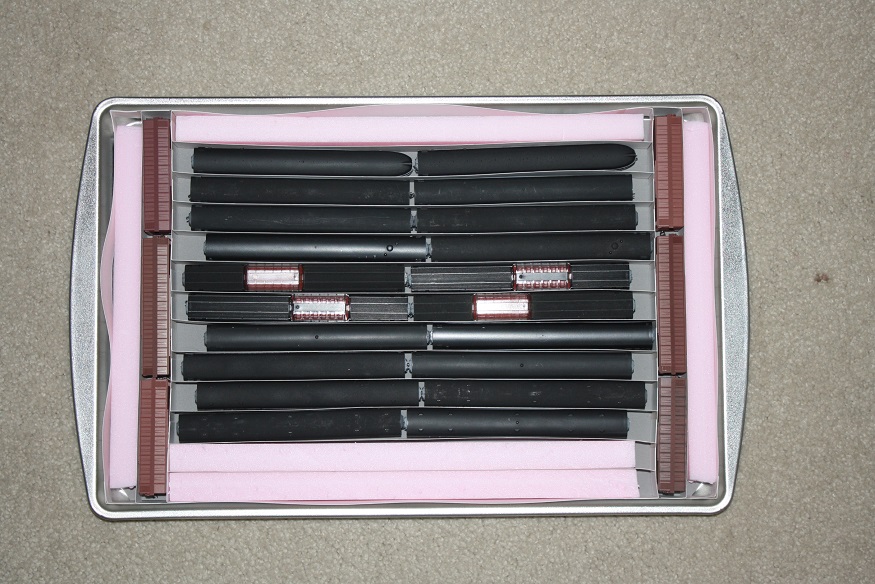
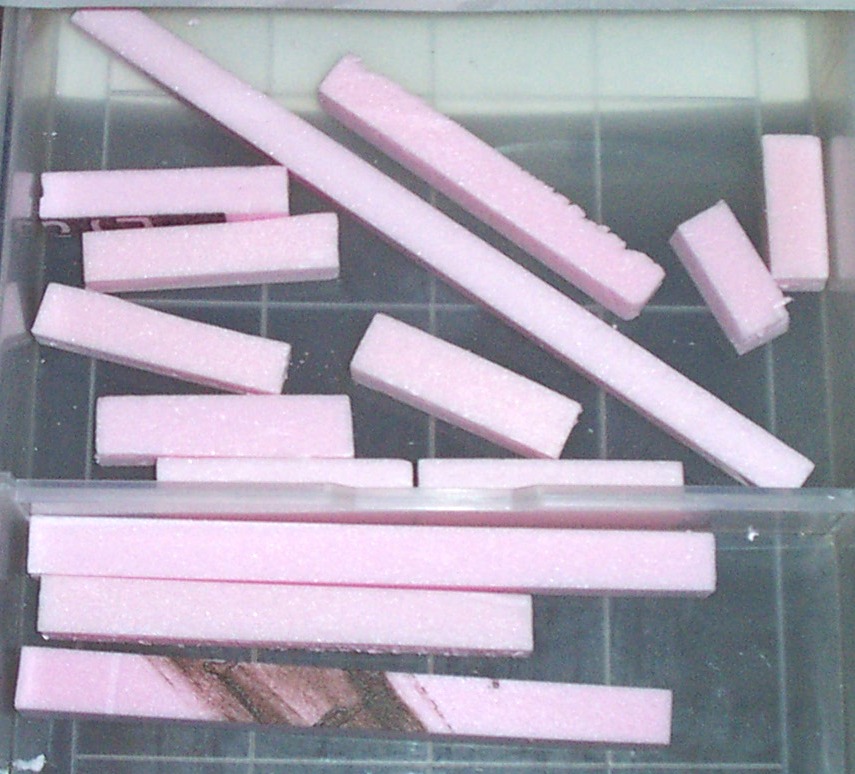
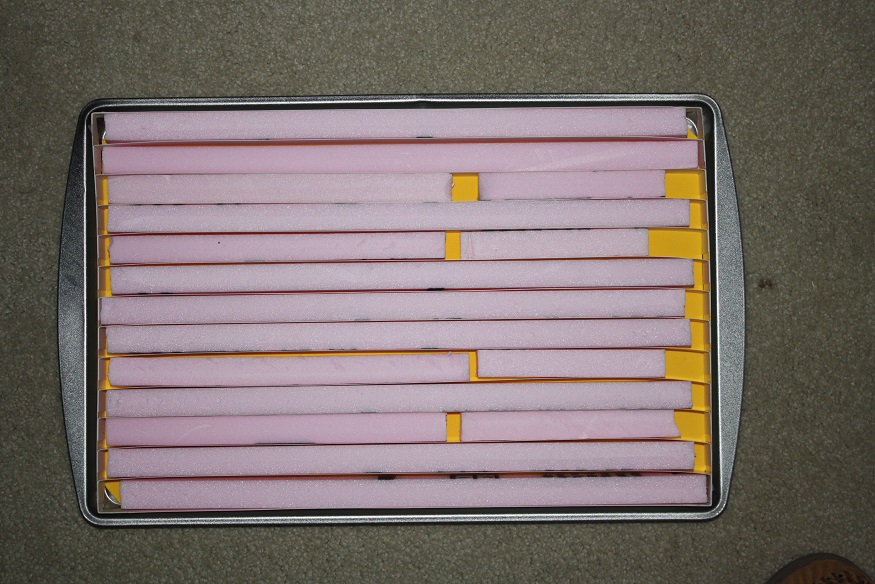
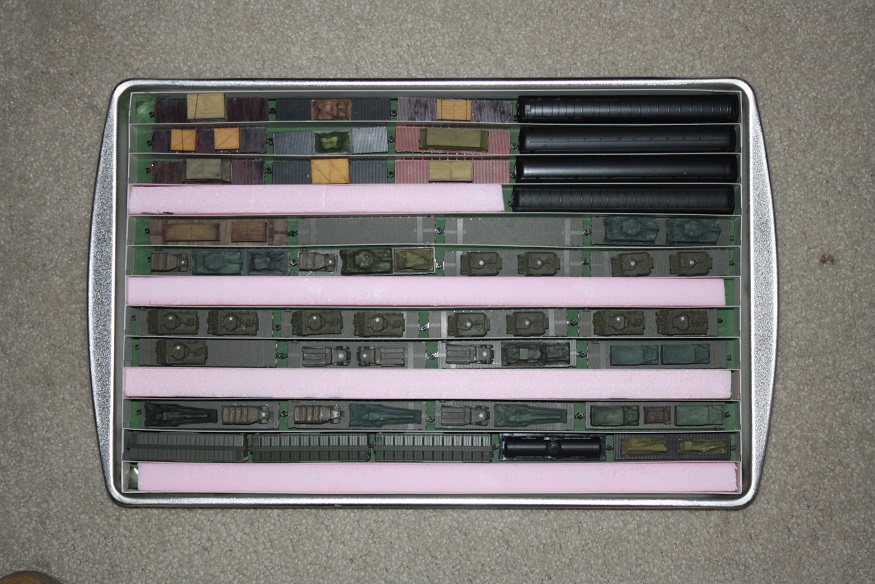

.jpg)
